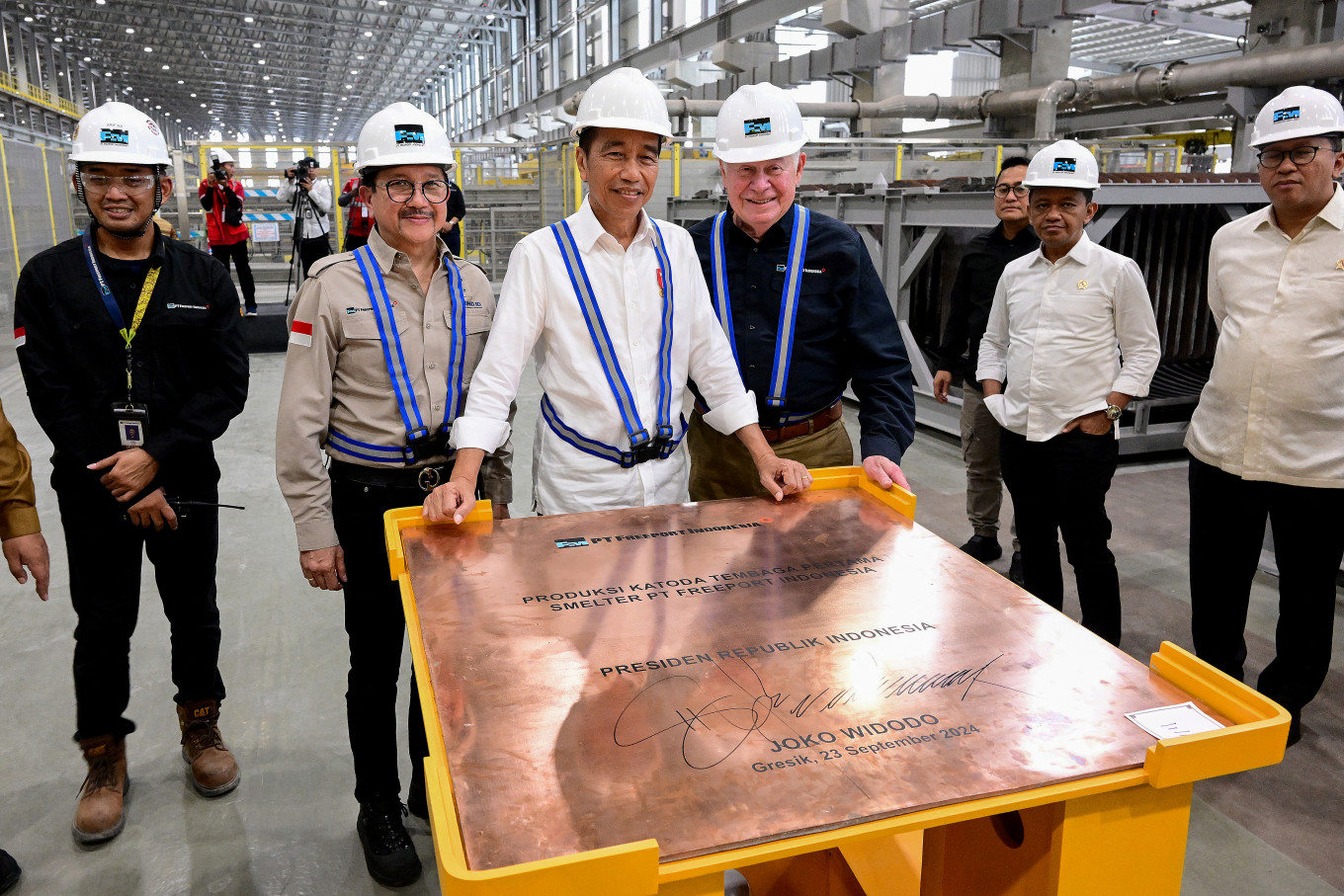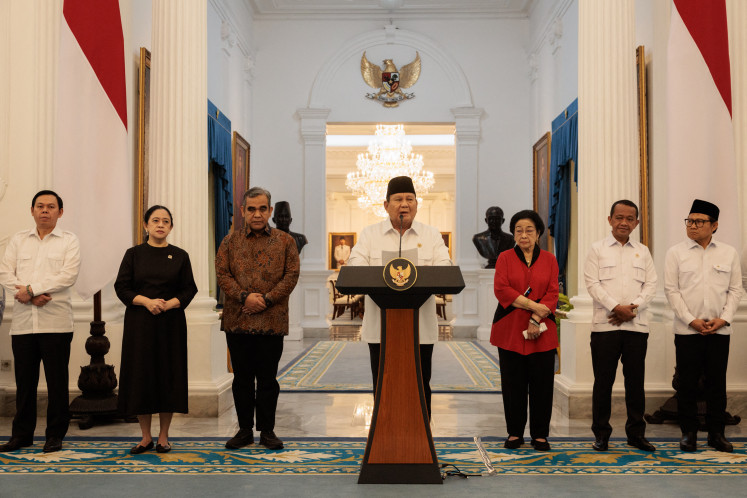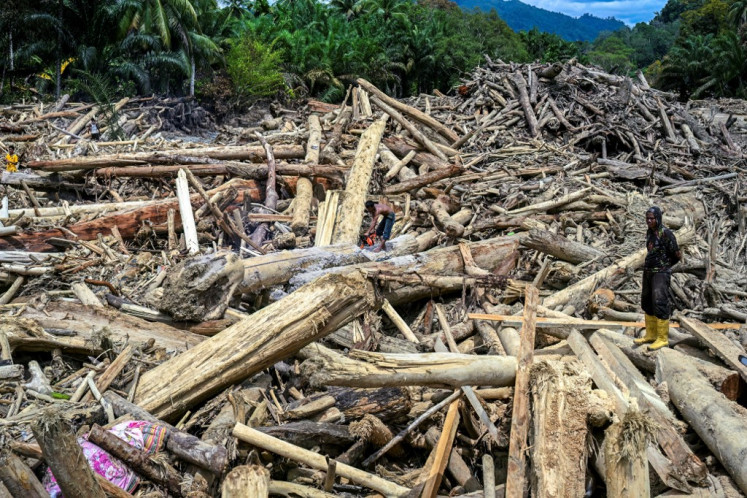Popular Reads
Top Results
Can't find what you're looking for?
View all search resultsPopular Reads
Top Results
Can't find what you're looking for?
View all search resultsFurther along the downstream chain
To make the downstream policy truly worthwhile, we need to go deeper along the supply chains, as what we produce from our smelters nowadays is just the transformation of raw commodities into slightly less raw forms.
Change text size
Gift Premium Articles
to Anyone
W
ith less than a month before leaving office, President Joko “Jokowi” Widodo was on a roll in the past week visiting multiple sites, where milestones of some downstream projects were achieved, simply to show how well the policy is working.
This included inaugurating a copper smelter in Sumbawa, East Nusa Tenggara, and overseeing the launch of copper cathode production in Gresik, East Java, as well as witnessing the first bauxite injection to an alumina smelter in West Kalimantan. The President has inaugurated many similar downstream projects in the past.
Since its inception, the downstream policy, one of Jokowi’s signature legacies, has not always been greeted with such levels of optimism, with frequent complaints over export bans, which impacted foreign buyers and local businesses who have yet to finish their smelters. Others have pointed to the environmental and social impacts it has caused to local livelihoods.
Despite that, we should give credit where it is due. The industrial downstreaming policy has added more value to the country’s exports compared with just shipping them in raw form. The trade balance has remained in surplus for over four years in a row, which is beneficial for the economy and the rupiah exchange rate.
Currently, most of this has been driven by nickel and copper and then soon enough, bauxite. More downstream plans are already on the table, waiting for a nod from the incoming government. They include other minerals like gold and tin, as well as commodities in the agriculture, plantation and perhaps fisheries sectors.
However, to make the downstream policy truly worthwhile, we need to go deeper along the supply chains, as what we produce from our smelters nowadays is just the transformation of raw commodities into slightly less raw forms. Moreover, much of the production of local smelters still ends up being exported to be processed further along the supply chain.
Ironically, oftentimes Indonesia later imports these products as input for domestic industry. In some cases, the country procures entirely finished goods from foreign factories that bought processed minerals from our smelters.
This means that we have to build more midstream industries around the commodities that we have already started to process domestically, as part of the government-led downstreaming program.
Then more investment will be needed to attract industries that will turn them into semi-finished or finished goods. Indonesia has done well in processing nickel into stainless steel,but it still needs to go further in the envisioned electric vehicle industry.
Obviously, we also need that kind of investment to promote sustainability, either in the form of using clean energy or waste management, and the employment of local workers.
At this stage, the downstream policy is good but it will not result in the industrialization that we badly need to realize the ambition of becoming a high-income country. The path will not be easy and the dream will only come true if the efforts continue in the years to come across different administrations.
President-elect Prabowo Subianto ought to consider carrying on the downstreaming program. Such a commitment is not just for the sake of continuity per se, but also to justify the huge investments by businesses that have put their trust in the government’s downstream policy and drive.
At the end of the day, dollars can only do so much to realize these things, what truly matters is the political will of the powers-that-be to actually want this to happen. Incentives and investments can only follow where the political winds of our leaders take us.











